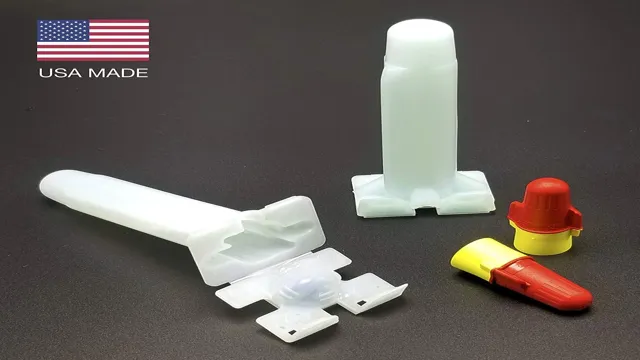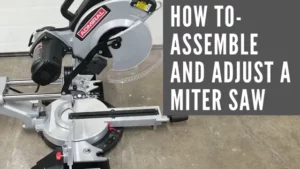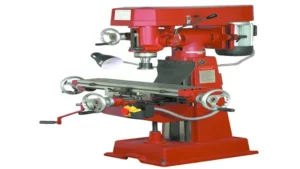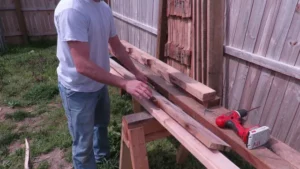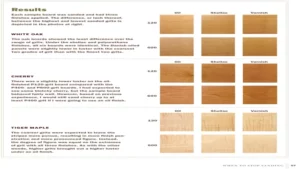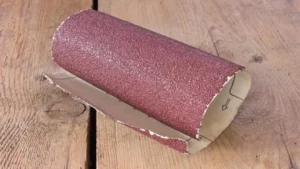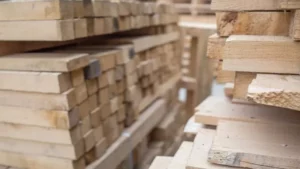Splicing wires is a handy skill for anyone working on electrical projects, but when it comes to splicing 10 gauge wire, things can get a little tricky. But fear not! With a little know-how and some patience, you can splice 10 gauge wire like a pro. In this how-to guide, we’ll cover everything you need to know to successfully splice 10 gauge wire, from selecting the right tools and materials to step-by-step instructions.
Whether you’re a seasoned electrician or a DIY enthusiast, this guide will help you confidently tackle your next project. So, grab your wire strippers and let’s get started!
What You Will Need
If you need to splice 10 gauge wire, you will need a few key tools and materials to do so. First, you’ll need the wire that you want to splice, along with a corresponding connector that is suitable for 10 gauge wire. Insulated connectors are best, as they will protect your splice from exposure to the elements and reduce the risk of electrical shorts.
You’ll also want a wire stripper to remove the insulation from the ends of your wires, along with pliers or wire cutters to trim the ends as needed. A crimping tool will help you to securely attach the connector to each wire, while a heat gun can be used to shrink-wrap the terminals for even greater protection. With the right tools and a bit of patience, anyone can learn how to splice 10 gauge wire safely and effectively.
10 gauge wire
If you are looking to wire your home with a 10 gauge wire, there are a few things you will need in order to complete the job properly. Firstly, you will need a wire stripper to strip the insulation off the wire. A good set of pliers will also come in handy, as you will need to be able to cut and bend the wire to fit into place.
Additionally, you may need a voltage tester to ensure there is no voltage present in the wire before you start working with it. It is important to make sure that you have all the necessary tools before starting the project to ensure that you can complete it safely and efficiently. With the right tools and some basic knowledge of wiring, you can easily install 10 gauge wire in your home and improve the safety and reliability of your electrical system.
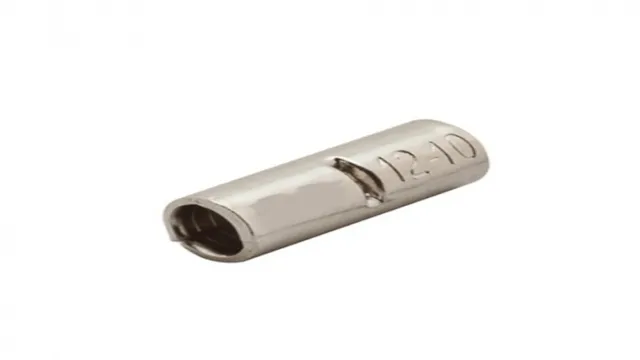
Wire stripper
If you’re planning on doing some electrical work around your home, one of the most important tools to have on hand is a wire stripper. This handy device is designed to strip away the insulation from electrical wires, allowing you to connect them to other wires or to electrical components. When looking for a wire stripper, you’ll want to make sure you choose one that is appropriate for the job at hand.
Most wire strippers are adjustable, allowing you to adjust the blades to the size of the wire you’re working with. You’ll also want to consider the design of the tool, as some models include additional features, such as crimping or cutting capabilities, that can make your work easier and more efficient. Additionally, it’s important to choose a wire stripper that is comfortable to hold and easy to use, as you’ll likely be using it for extended periods of time.
With the right wire stripper on hand, you’ll be able to tackle electrical tasks with confidence and ease.
Wire connector
When it comes to wiring, wire connectors are a must-have. These small devices help to connect multiple wires together and ensure that the electrical connection remains secure. To use wire connectors, you will need a few things.
Firstly, you will need the wires that you want to connect, along with the wire connector itself. You may also need wire strippers to remove the protective coating from the ends of the wires. Finally, depending on your needs, you may require pliers or a screwdriver to secure the connector in place.
With these tools at your disposal, you will be well-equipped to make safe and reliable electrical connections. Remember, always read the instructions carefully before attempting to use wire connectors and take the necessary safety precautions to protect yourself from electrical shocks and fires.
Wire crimpers
When it comes to working with wires, having the right tools is essential. Wire crimpers are one such tool that you should have in your toolkit for any electrical or wiring projects you undertake. These pliers-like tools help in crimping connectors onto wires for a secure and durable connection.
To use wire crimpers, you will need the connector to be crimped, the wire to be inserted into the connector, and of course, the wire crimper itself. It’s important to make sure that the connector and wire are of the appropriate size, and that you use the correct type of wire crimper for the connector being used. With these tools, you can quickly and easily make tight, professional-grade connections that are essential for everything from automotive repairs to household wiring projects.
By having the right tools and knowing the proper techniques, you can ensure that all of your wiring projects are safe, effective, and built to last.
Steps to Splice 10 Gauge Wire
If you’re looking to splice 10 gauge wire, there are several steps you can follow to ensure a secure and reliable connection. First, strip about an inch of insulation from each end of the wires you want to splice. Next, twist the exposed wire ends together tightly, making sure there are no loose strands.
You can also add a solder if you want a more secure connection. After this, slide a heat shrink tube over the spliced wires and apply heat using a heat gun or lighter. The heat will shrink the tube around the splice, providing insulation and protection against moisture and other elements.
Finally, test your connection to make sure it is working properly before covering it with electrical tape or heat shrink tubing. With these simple steps, you can splice 10 gauge wire like a pro!
Step 1: Strip the insulation
To splice 10 gauge wire, the first step is to strip the insulation. This may seem like a simple task, but it is crucial to do it correctly to ensure a strong and secure splice. Start by identifying the section of wire that needs to be spliced and measure the length of insulation that needs to be removed.
Use wire strippers to carefully remove the insulation by placing the wire into the appropriate slot and squeezing the handles. Make sure not to cut into the wire itself, as this may damage the core and weaken the connection. Once the insulation is removed, you should have a clean section of wire ready for splicing.
By taking the time to strip the insulation correctly, you’ll be setting yourself up for success when it comes to creating a strong and reliable connection.
Step 2: Twist the wires together
Splicing 10 gauge wire may seem daunting at first, but with the right steps and tools, it can be done easily. Once you’ve stripped the ends of the wires and made sure they are undamaged, the next step is to twist them together. This step is crucial as it ensures a secure and tight connection between the wires.
Using pliers, hold both wires tightly and twist them in a clockwise manner until they are tightly wound together. Make sure not to over-twist the wires, as this can damage the insulation and create an unreliable connection. You want to aim for a neat and tidy twist, without any frayed or loose ends.
Once you’ve twisted the wires together, you’re ready to move onto the next step in splicing 10 gauge wire. Remember, taking your time and being careful is essential when working with electricity. With a little practice, splicing wire can become second nature.
Step 3: Insert wire connector into the twisted wires
When splicing 10 gauge wire, it’s important to follow the correct steps to ensure a secure connection. After twisting together the wires that need splicing, the next step is to insert a wire connector. These connectors come in different sizes, so make sure you use a connector that’s suitable for 10 gauge wires.
Once you’ve picked the right connector, simply insert it into the twisted wires until it’s fully seated. You can use pliers to make sure it’s firmly inserted, but be careful not to squeeze the connector too hard. The wire connector should cover all the exposed wires and keep them from touching each other.
This helps to prevent short circuits, which could cause a fire hazard. By following these easy steps, you’ll be able to splice 10 gauge wire quickly and safely, giving you peace of mind knowing that your electrical connections are secure.
Step 4: Crimp the wire connector
10 gauge wire splice Once you have twisted the wires together, it’s time to crimp the wire connector. You can use either a standard crimp or a ratcheting crimp tool. The latter provides a more secure connection, but both work well with 10 gauge wires.
Align the connector over the twisted wires, making sure they are snugly inside. Next, use the crimp tool to squeeze the connector tightly onto the wires. You can check if it is secure by gently tugging on the wires to ensure they are not loose.
It is essential to make sure the connector is a tight fit because a loose connection can lead to electrical fires or equipment damage. After crimping the connector, inspect it visually to ensure there are no exposed wires. If there are any, snip them off with wire cutters.
A well-done crimped wire connection should be tight, secure, and able to carry the needed electrical current, so take the time to do it right.
Safety Tips
Splicing 10 gauge wire can seem like a daunting task, but with the right tools and techniques, it can be done safely and effectively. Here are a few safety tips to keep in mind when splicing 10 gauge wire. First and foremost, always wear appropriate personal protective equipment, such as gloves and safety glasses.
Make sure that the wire is de-energized before beginning any work, and use a voltage tester to confirm that there is no electrical current present. When working with wire, it’s best to use tools specifically designed for the task, such as wire strippers and crimping tools. Finally, be sure to follow all manufacturer instructions when splicing your 10 gauge wire.
With a little practice and attention to safety, you’ll be able to splice 10 gauge wire like a pro!
Always turn off power before splicing wires
When it comes to splicing wires, safety should always be your number one priority. One crucial safety tip is to always turn off the power before starting the splicing process. This may seem obvious, but it’s important to always remember to do this, even if you think you know what you’re doing.
The risk of electrocution is ever-present when working with electrical wires, so it’s important to take every precaution possible. To ensure that you remain safe while splicing wires, it’s also important to wear appropriate safety gear like gloves and goggles. This will protect your hands and eyes from any potential hazards.
Additionally, you should be sure to have a first-aid kit on hand in case of any accidents. Remember, when splicing wires, taking the time to turn off the power and protect yourself can make all the difference. Always take the necessary safety precautions before diving in.
Wear safety glasses
When it comes to staying safe on the job, one of the most important things you can do is wear safety glasses. Whether you’re working in construction, handling chemicals, or operating heavy machinery, your eyes are at risk of injury from flying debris, splashes, and other hazards. Safety glasses provide a crucial layer of protection, shielding your eyes from harm and preventing accidents that could cause blindness or other serious injuries.
Don’t take any chances when it comes to your vision – invest in a quality pair of safety glasses and wear them every time you’re on the job. You’ll be glad you did, and your coworkers will thank you too. Remember, it only takes a split second for something to go wrong – so don’t take any chances when it comes to your safety.
Use tools properly
When working with tools, safety should always be a top priority. It’s important to use the appropriate tools for the job and to use them properly. Always read the instructions and become familiar with how the tool works before using it.
One common mistake people make is using a tool for a task it wasn’t designed for. This can lead to accidents and injuries. It’s also important to wear personal protective equipment, such as gloves and eye protection, when necessary.
Additionally, never use tools when you are tired or under the influence of drugs or alcohol. By following these safety tips, you can reduce the risk of accidents and injuries while working with tools. So, remember to use the right tools for the job, follow instructions carefully, and take the necessary precautions to stay safe.
Final Thoughts
If you’re trying to connect two 10 gauge wires together, splicing is a great way to do it. First, strip about an inch of insulation off of each wire, and then twist the exposed wire ends together. Be sure to twist them tightly – you want a good, secure connection that won’t loosen over time.
Next, take a piece of heat shrink tubing and slide it over the twisted wire connection. Heat the tubing with a heat gun until it shrinks and tightens around the wires. This will provide insulation and protect the connection from damage.
Finally, test the connection by pulling on each wire to make sure it’s secure. With this simple process, you can easily and safely splice 10 gauge wire without having to buy new wire connectors.
Conclusion
In conclusion, splicing 10 gauge wire may seem daunting at first, but with the right tools and a bit of patience, you can master it like a pro. Remember, always use heat shrink tubing to insulate your splice and ensure a snug fit. And like any good splicer, remember to appreciate the beauty in the connections you make – after all, it’s the little connections in life that keep us all together.
“
FAQs
What tools do I need to splice 10 gauge wire?
You will need wire cutters, wire strippers, pliers, and a soldering iron.
Can I splice 10 gauge wire without a soldering iron?
Yes, you can splice 10 gauge wire with a wire nut or crimp connector instead of soldering.
How do I prepare the 10 gauge wire for splicing?
Use the wire strippers to remove about an inch of the insulation from the end of each wire. Then, twist the exposed wires together tightly.
What is the proper way to solder 10 gauge wire?
Apply heat to the wire with the soldering iron and then apply the solder to the joint. Make sure the solder flows evenly and covers the entire joint.
Can I use electrical tape to insulate the spliced wires?
No, you should use heat shrink tubing to insulate the spliced wires.
How much heat do I need to apply to the wire when soldering?
Apply enough heat to the wire to melt the solder and create a good bond. Be careful not to overheat the wire, as this can damage it.
Is it safe to splice 10 gauge wire for high current applications?
Yes, as long as the splice is done properly and the wires are insulated correctly, splicing 10 gauge wire is safe for high current applications.
